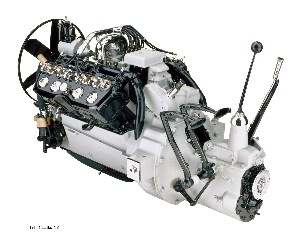 By John Carollo, contributor
By John Carollo, contributor
Today’s economy and the seemingly constant state of change bring about market changes faster than the evolution of the automobile engine. How have these changes in the market and in vehicles affected shops specializing in vintage engines, as well as those shops thinking about adding vintage to their list of services?
The automotive enthusiast and collector market is a funny creature. While the actual mechanical evolution may sometimes run in opposite directions, the eras of interest are primarily broken down by time blocks, not by the cars and trucks themselves. Most car people differentiate between Pre-War, Post-War, First Muscle Car and now the
Second Muscle Car eras.
The Pre-War Era — up to 1940 — is all about mass production getting up to speed across the many brands of cars, many never to be seen again.
The second era — the biggest as far as evolution goes — is Post-War: 1940-’60, and coincides with the growth of America and what was learned from the technology of building for war.
The third is the Muscle Car era of the ’60s in which the Baby Boomers came of age and hit the streets.
The Second Muscle Car Era — 2009 and up — is made up of the kids of those Baby Boomers, getting their driver’s licenses and feeling the influences of their parents’ love for those cars.
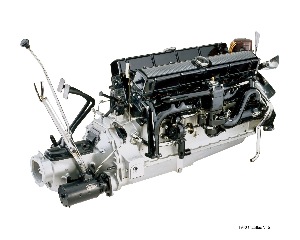 This categorization is unique as it’s accepted across the board in all genres, from restoration and hot rods, to racecars or trucks. It’s likely no coincidence that those timespans fit into generations, as well. Typically, as one generation grows up, their offspring grows into the next generation of car and truck lovers.
This categorization is unique as it’s accepted across the board in all genres, from restoration and hot rods, to racecars or trucks. It’s likely no coincidence that those timespans fit into generations, as well. Typically, as one generation grows up, their offspring grows into the next generation of car and truck lovers.
The first question one must ask should help shops determine the popularity of pre-war engines: What parts are popular and, more importantly, available?
According to industry enthusiasts, the popular vehicle makes include Flathead Fords and Mopar six-cylinders, as well several other makes, including Chevys, Studebakers and Packards.
The Pre-War vehicle market — though not necessarily as popular as of some of the other periods — offers a good combination of opportunities. According to those in the market, a lot of the available work depends on the brand. For example, Studebakers and Packards tend to get restored, while someone with a Chevy might just be trying to get it running.
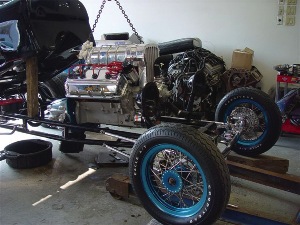 Add To Cart
Add To Cart
According to Egge Machine Company’s Tony Colombini, keeping those vehicles running often means rethinking that technology with today’s products. Colombini said big sellers in Pre-War engine servicing products are mainly cast aluminum pistons and stainless steel valves.
Cast aluminum pistons are a good replacement for the older-style, cast iron pistons, and stainless valves are designed for unleaded fuel, unlike the original equipment in automobiles from that era.
Packard Industries’ Bob Rovegno said engine kits for the popular GM, Ford and Mopar Pre-War engines are popular items for engine enthusiasts. The company also reproduces and sells a large quantity of timing chains, gears and sprockets for Pre-War engines, as well as reproduces the popular six- and eight-cylinder pistons and main and rod bearings for Buicks, Chevys, Cadillacs, Packards and Pontiacs.
Since alternate sources for these and most other Pre-War engine parts are drying up, Rovegno said his company has continued to invest in reproducing as many of the popular engine parts as is economically feasible.
Although the automobile industry had grown out of its infancy by the 1920s and ’30s, most manufacturers had their own unique way of designing and producing their own motors. This lack of consistency in parts design means simple parts substitution can be a challenge, says Rovegno.
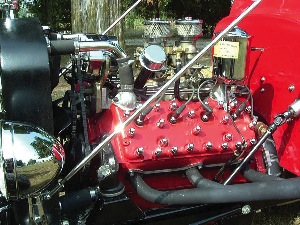 “Ford V8s had two connecting rods that shared one rod bearing. The bearing spins both in the rod and on the crank, so clearances have to be checked both on the ID and the OD. Hudson made its blocks out of chrome alloy steel that was so hard they didn’t use valve seats. Many good shops have discovered that you will use up both time and material when boring and honing these blocks.”
“Ford V8s had two connecting rods that shared one rod bearing. The bearing spins both in the rod and on the crank, so clearances have to be checked both on the ID and the OD. Hudson made its blocks out of chrome alloy steel that was so hard they didn’t use valve seats. Many good shops have discovered that you will use up both time and material when boring and honing these blocks.”
According to vintage engine expert Doc Frohmader, the changes to vehicles over the years means understanding the older engines can be more difficult than ever; but don’t blame the engine.
“Gaskets and seals have changed and so have the techniques for installing them. I’m surprised to find that some engine builders don’t know how to install rope rear main seals and then blame the engine or blame the seal. Or, they fail to determine that there is a lip seal conversion for a given vintage engine." he said.
"Or, they blame the gaskets when a collapsed valve cover or pan rail is warped up enough so no gasket will seal and the engine leaks. Or, they use gaskets made 30 years ago that are out-of date-technology and dried up to boot. Worse yet, we still have those who insist that a vintage engine will just leak because it was designed that way and completely ignore modern ways to correct old ills.”
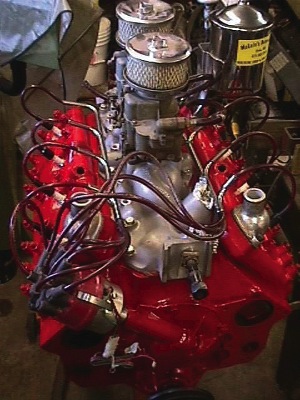 Slow and Steady…
Slow and Steady…
One thing is for certain regarding these powerplants: engine specialists need to know that these engines can be a little more tedious to work on. And, dealing with the ancient designs of babbitted rod and main bearings, shims, fiber timing gears, split valve guides, accessory chains that drive water pumps, generators and mechanical lifters will seem overwhelming at first if you’re used to today’s modern technology.
Rovegno said that knowing what you don’t know is vital in this market. “There are so many idiosyncrasies in rebuilding and servicing Pre-War engines that I would say the most important ‘tool’ you need is knowledge. Find out everything you can about the engine before you start the job and you will avoid unpleasant surprises.”
The equipment to work on these engines also may be dated and certain engines need certain tools. “Engines like flathead Ford V8s need an adjustable lifter tool to hold the lifter stationary while the adjusting screw is turned,” said Colombini.
Rovegno added that although most Pre-War engines had unique tools supplied by the manufacturer to assist in engine servicing and rebuilding, most of these are no longer available. However, due to the simplicity of the motors, most shop tools used today can still be used on these early engines — it may just take a little bit of ingenuity to modify a shop tool from today to be used on an engine from years ago.
Expert Advice
While the experts see this industry of 70-year-old engines as one that’s shrinking, parts suppliers have said they haven’t experienced a significant decline in sales yet. One reason is because parts suppliers have learned to reproduce many of these Pre-War engine parts.
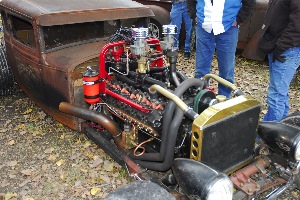 “We can usually find a creative option to keep these cars on the road,” said Jim Ketchum, Pre-War expert at Egge Machine Company. “What you can’t do, however, is be frugal. There’s no way to say ‘yeah, I want to build this engine, but I want to build it cheap.’ That word doesn’t fit in this market.”
“We can usually find a creative option to keep these cars on the road,” said Jim Ketchum, Pre-War expert at Egge Machine Company. “What you can’t do, however, is be frugal. There’s no way to say ‘yeah, I want to build this engine, but I want to build it cheap.’ That word doesn’t fit in this market.”
Colombini added that demand is often inversely linked to the original production numbers, “Some Pre-War engines will have a higher demand for parts if more vehicles were produced. Others may have a lower demand if fewer of them exist to be restored.”
Customers, it seems, are aware of the price of their prizes, says Ketchum, often more so than in other vintage markets.
“It’s more of a veteran-enthusiast group,” he explains. “A lot of them understand what they’re getting into with Pre-War vehicles. They know it’s not going to be cheap. Post-War people, though, sometimes have trouble accepting the costs.”
Ketchum said he often get questions from enthusiasts who are considering rebuilding their Marmon, LaSalle or Hupmobile, but want to know about parts first. “They’re not concerned about how much it will cost, they just want to be sure they can get parts before they commit to the project.”
Beware of Shrinkage
It’s obvious that the market for Pre-War engine parts will continue to shrink because there are only so many Pre-War cars and trucks scattered throughout the country that will eventually be restored.
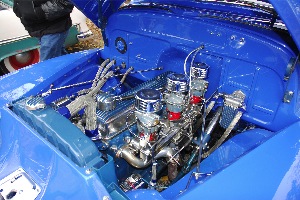 And, many of these vehicles will be turned into street rods with modern drivetrains installed.
And, many of these vehicles will be turned into street rods with modern drivetrains installed.
Also at issue is since the vehicles already restored are seldom driven, you can’t count on return service work. However, the profit potential is considerable if you get one of these Pre-War engines in your shop. And, many car collectors have more than one vehicle in their collection, so if you make your customer happy, it can mean more profit for you in the future.
Colombini sees a natural transition in, but not an elimination of, vintage interest. “The Pre-War market in the future will be shrinking. Sales of these Pre-War components have decreased in recent years, but based on the response of our customers and the parts that they request from us, demand for Post-War vehicles in the collector marketplace has seemed to grow.”
Another segment to consider is the ever-expanding traditional or Rat Rod culture. Their theme is using parts available in 1962 and earlier, including those from the junkyards of 1962 where most hot rodders got their parts. In this car culture, even the most obscure motor is acceptable, so resurrecting tired motors is the norm.
Rat Rods cross into the Post-War period, and as far as enthusiasts go, it’s the fastest growing market out there today. Engine specialists need to know what speed goodies from the era will work and, just as importantly, be period correct.
At this time, the market for Pre-War engine work is there and currently strong. However, there is a shelf life that will eventually run out. The question is, are you willing to take on one of these old-timers?












